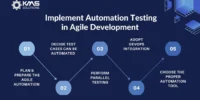Welcome to Microservices Maintenance 2.0, where we embark on a journey to keep your microservices architecture agile and in peak health. In the fast-paced world of software development, maintaining the robustness of your microservices is crucial. Let’s explore some quick tips to ensure your microservices stay agile and healthy.
1. Continuous Monitoring for Proactive Maintenance
Start by implementing continuous monitoring to enable proactive maintenance. Monitor key metrics, such as response times, error rates, and resource utilization. This approach allows you to identify issues before they impact the user experience, ensuring your microservices are always in top shape.
2. Automated Testing: Shielding Against Regression ️
Automated testing is your shield against regression issues. As your microservices evolve, ensure that automated tests cover crucial functionality. This practice safeguards against unintended side effects and ensures that new updates don’t introduce unforeseen problems into your system.
3. Container Orchestration: Embracing Scalability ⚖️
Embrace container orchestration for enhanced scalability. Platforms like Kubernetes allow you to efficiently manage and scale your microservices. Utilize features like auto-scaling to adapt to varying workloads, ensuring your system can handle both peak and off-peak demands seamlessly.
4. Graceful Degradation: Navigating Failures with Elegance
Implement graceful degradation to navigate failures with elegance. When components or services experience issues, gracefully degrade the user experience instead of causing complete service outages. This approach ensures that your microservices continue to provide essential functionality even in less-than-ideal conditions.
5. Centralized Logging: Enhancing Debugging Efficiency
Enhance debugging efficiency through centralized logging. Consolidate logs from different microservices to provide a holistic view of your system’s behavior. This unified approach simplifies issue identification, accelerates troubleshooting, and facilitates quick resolution of potential bottlenecks.
6. Microservices Health Checks: Ensuring Service Viability ✅
Implement microservices health checks to ensure service viability. Regularly assess the health of individual microservices to identify potential problems. Incorporate these health checks into your monitoring system, enabling real-time alerts and proactive intervention when issues arise.
7. Security Patch Management: Fortifying Against Threats ️
Fortify your microservices against security threats with effective patch management. Stay vigilant about security updates for dependencies and underlying infrastructure. Timely application of patches ensures that your microservices remain resilient in the face of evolving security challenges.
Conclusion: Microservices Maintenance 2.0 — A Blueprint for Resilient Systems
In conclusion, Microservices Maintenance 2.0 is your blueprint for maintaining agile and healthy microservices. Embrace continuous monitoring, automated testing, container orchestration, graceful degradation, centralized logging, microservices health checks, and security patch management. By following these quick tips, you’ll ensure that your microservices not only survive but thrive in the dynamic landscape of modern software development.








